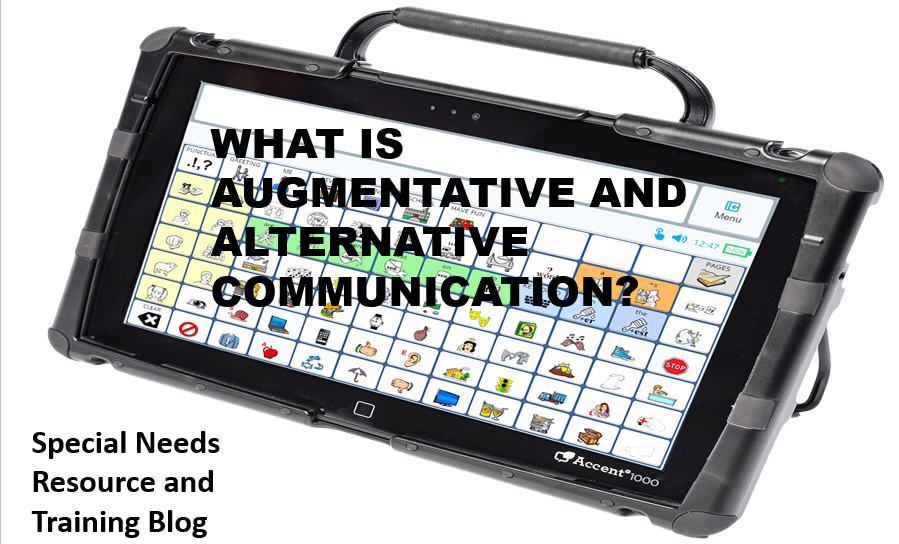What is Augmentative and Alternative Communication (AAC)?
According to the American Speech Language Hearing Association, there are over 2 million people with significant expressive language impairment who use AAC. AAC users including people with the following disorders; autism, cerebral palsy, dual sensory impairments, genetic syndromes, intellectual disability, multiple disabilities, hearing impairment, disease, stroke, and head injury.
According to the International Society for Augmentative and Alternative Communication Organization. AAC is a set of tools and strategies that an individual uses to solve everyday communicative challenges. Communication can take many forms such as: speech, a shared glance, text, gestures, facial expressions, touch, sign language, symbols, pictures, speech-generating devices, etc. Everyone uses multiple forms of communication, based upon the context and our communication partner. Effective communication occurs when the intent and meaning of one individual is understood by another person. The form is less important than the successful understanding of the message.
The types of AAC includes both low-tech and high tech. Low tech AAC includes symbol charts, PECS, and communication boards, while high tech AAC include electronic devices such computers, tablets and devices.
The following information provides resources, articles and tips on using AAC:
3 sets of AAC goals for interactive books
5 quick and easy games that build AAC skills
50 simple switch or low tech activities
How to make an AAC symbol library
Language opportunities to use AAC at home
Promoting inclusion and participation for people who use AAC
Reducing prompt dependence in AAC learners: 5 things to try
Using AAC more in the classroom
Using LIST in PODD communication books
What does it take to implement AAC


